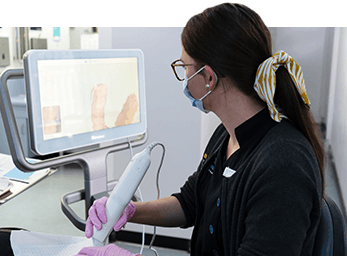Invisalign® FAQs
What is Invisalign®?
Invisalign® is an effective orthodontic treatment method that straightens your teeth using clear, plastic aligners rather than traditional braces.
Does Invisalign® really work?
Yes, studies show 98% of patients who have been treated with Invisalign® are satisfied with the results. In both clinical research and in dental practices around the world, Invisalign® has been proven effective at straightening teeth. Invisalign® cannot treat all orthodontic conditions but we can determine if Invisalign® is right for you at your initial consultation.
*This product is not available for purchase by the general public. Always follow the directions for use.
How experienced is the Torque Orthodontic team with Invisalign?
Very! We have been recognised by Invisalign itself and awarded Diamond Invisalign provider status for many years. We are one of the most experienced Invisalign clinics in Queensland and we are committed to continually updating our education of Invisalign. We are also a member of The Invisible Orthodontist, a global network of orthodontists who specialise in discreet orthodontic treatment methods, such as Invisalign.
What are Invisalign aligners made of?
Invisalign aligners are made of polyurethane, a clear, strong, non-toxic, medical-grade plastic. This gives them their clear, translucent appearance which makes them difficult to see when worn.
What do the aligners look like?
Invisalign aligners look like a clear covering over the teeth, similar to clear tooth-whitening trays or a thin sports mouthguard. Each aligner is custom-designed for the patient so it fits very snugly on your teeth.
How long will treatment take?
There are different types of Invisalign treatments. For minor orthodontic problems, Invisalign can correct problems in as little as 6 months. For more complex problems between 18-24 months, although each case varies.
How does Invisalign move teeth?
The Invisalign aligner applies constant, controlled force on individual teeth to gradually move them into a new position. Then, the next aligner in the series continues this force and movement until the teeth are settled in the desired position as planned by your orthodontist. Small tooth coloured attachments may be placed on your teeth to allow certain tooth movements with the aligners. Invisalign aligners control the timing of the force on teeth and the subsequent movements.
Has Invisalign conducted clinical tests and studies?
Yes, the Invisalign company was required to conduct clinical tests and studies prior to releasing its product commercially. These studies show the effectiveness and safety of the product. In addition, a number of United States and Australian dentists have published clinical articles about Invisalign.
Are there certain dental conditions that automatically exclude me from being an eligible patient?
Invisalign may not be the best option for a number of conditions including severely tipped teeth, multiple missing teeth and where teeth have not yet erupted.
How long will it take to begin treatment after my initial consultation?
After your initial consultation, we will take x-rays, photographs and scans of your teeth. The orthodontist will then design your treatment plan. Once the orthodontist is satisfied that your treatment goals will be achieved, the custom manufacture of your aligners will begin. Aligners are fitted once received in the practice.
Is Invisalign treatment painful?
There will be some mild discomfort during treatment. Most people experience temporary, minor discomfort for a few days at each new stage of treatment, but patients have said that treatment with Invisalign is much more comfortable than treatment with traditional, fixed braces. The discomfort that patients feel is typically described as a feeling of pressure. This shows that the aligners are working. This discomfort typically goes away after a couple of days.
Will the aligners affect my speech?
The aligners may temporarily affect your speech for a few days. However, as your tongue gets used to the aligners, any lisp or minor speech impediment should disappear.





